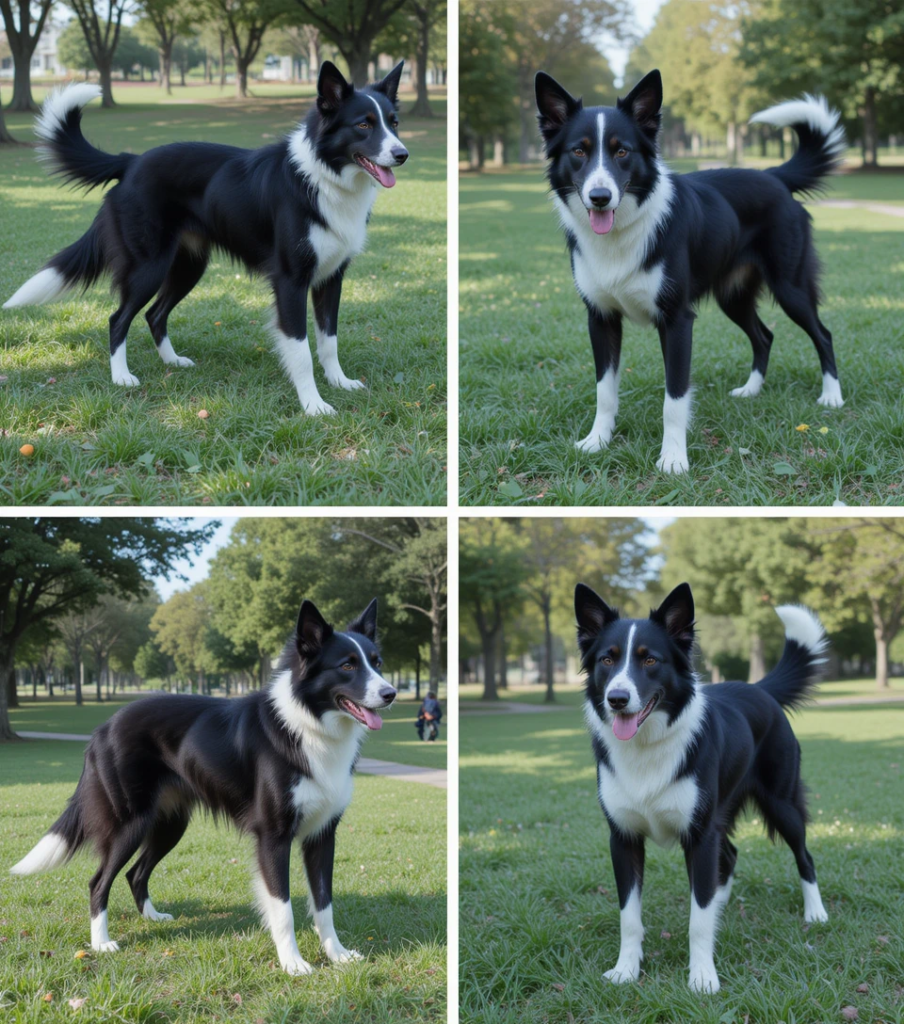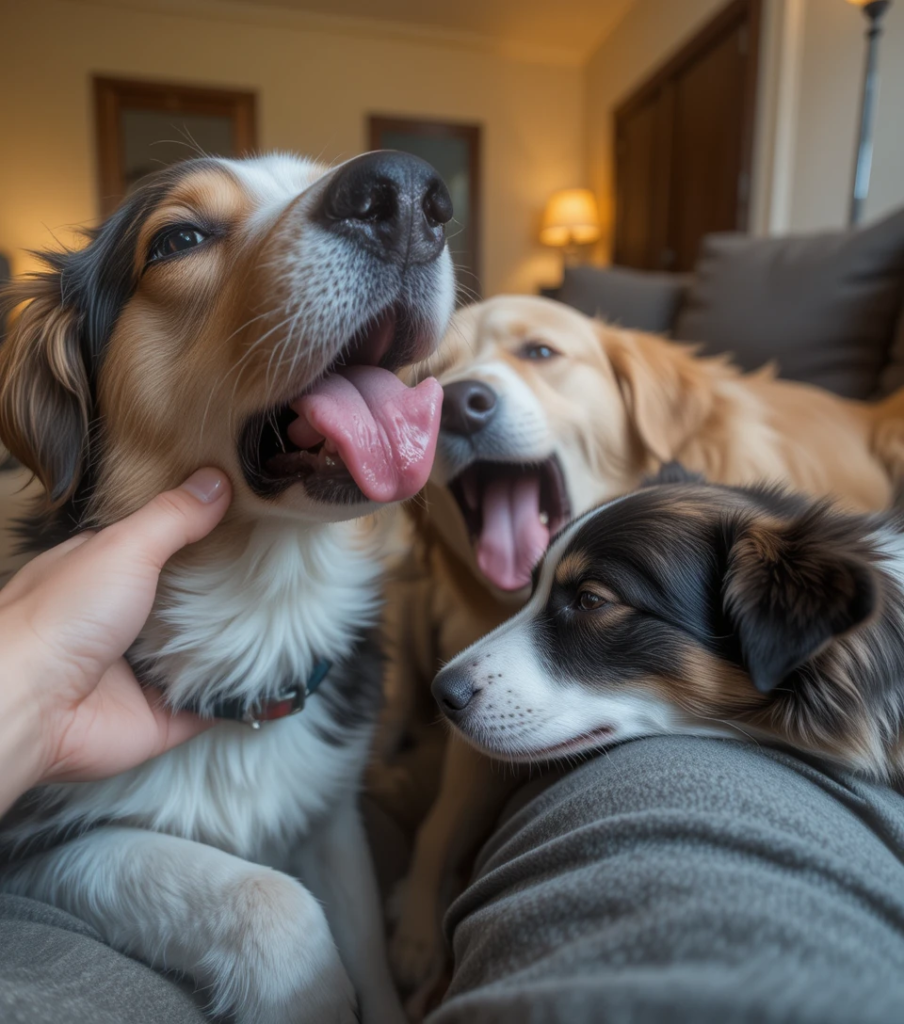Understanding how dogs communicate is a powerful way to build a stronger bond with your furry friend. While dogs can’t speak the same language as humans, they have evolved a wide range of communication methods that convey their emotions, needs, and desires. In fact, dogs are highly skilled at expressing themselves, and as pet owners, it’s essential to be in tune with their cues.
By learning the many ways dogs communicate, you can better understand their feelings, provide more tailored care, and ensure a happier and healthier life for your pet. From body language to vocalizations and even scent-marking, let’s explore the various methods dogs use to communicate and how you can unlock their hidden joy.
The Power of Canine Body Language

Dogs are experts at using body language to express what they’re feeling. A dog’s posture, tail movements, and facial expressions can reveal a lot about their emotional state. As a pet owner, understanding these cues can help you respond appropriately to your dog’s needs.
- Tail Wagging: A wagging tail is often associated with happiness, but the speed and position can tell you a lot more. A relaxed, wagging tail generally indicates contentment, while a fast, stiff wag can signal excitement or anxiety.
- Erect Ears: When a dog’s ears are perked up, they are usually alert or curious. If their ears are pinned back, it could signal fear or submission.
- Relaxed Posture vs. Stiff Body: A dog with a relaxed body and soft posture is typically calm and content. If your dog stands stiff with their body held high, it could indicate they feel threatened or on alert.
By observing these body language signals, you’ll be able to understand how your dog is feeling in any situation, which can help you respond with empathy and care.
Dog Vocalizations: More Than Just Barking
Barking is the most obvious way dogs communicate, but there’s a whole spectrum of vocalizations that carry deeper meanings. Each bark, whine, growl, or howl has its own emotional context and purpose.
- Barking: Dogs bark to alert you of something (e.g., a visitor or danger), ask for attention, or express excitement. The tone and frequency can tell you if they’re happy, anxious, or even trying to warn you.
- Whining: A whining dog is often trying to communicate distress, discomfort, or a need (such as hunger or wanting to go outside). It can also signify anxiety when separated from you.
- Growling: Growling is a sign of warning or discomfort. While it can indicate aggression, many dogs also growl during play or to express frustration. It’s essential to understand the context—whether it’s friendly or a sign of a threat.
- Howling: Dogs howl as a form of communication, often as a response to high-pitched sounds like sirens or musical instruments. In some cases, they may howl to get attention or express loneliness.
Learning to interpret these vocalizations can greatly improve your understanding of your dog’s needs and emotions.
Understanding Non-Verbal Cues in Dogs

While dogs rely heavily on body language and vocalizations, they also use other subtle non-verbal cues to communicate. These cues may seem small, but they can reveal a lot about your dog’s mood.
- Eye Contact: A dog that makes soft eye contact with you is usually expressing affection and trust. However, a dog that stares intensely or avoids eye contact may be feeling threatened or fearful.
- Licking: Dogs often lick their owners to show affection or to communicate submission. However, excessive licking might indicate stress, anxiety, or even a health concern.
- Yawning: Yawning isn’t just a sign of tiredness. Dogs also yawn as a way to calm themselves down when they’re anxious or in stressful situations.
- Nose Nudging or Nuzzling: If your dog nudges or nuzzles you with their nose, it’s often a sign of affection or a request for attention.
These non-verbal cues are essential for maintaining a healthy and empathetic relationship with your dog. By paying close attention to these subtle signals, you can better understand how your dog is feeling.
The Role of Scent in Dog Communication
Dogs have an extraordinary sense of smell, and they rely heavily on scent to communicate with one another and with humans. Unlike humans, dogs have an olfactory system that can detect scents at much higher concentrations, allowing them to gather information about their environment and even other animals.
- Scent Marking: Dogs mark their territory by urinating in specific areas. This is their way of communicating ownership and establishing boundaries.
- Sniffing and Socializing: When dogs meet each other, they often sniff each other’s faces, bodies, and private areas. This behavior is how they exchange information about each other’s identity, health, and emotional state.
- Scent Recognition: Dogs can recognize scents of familiar people and animals, which strengthens the bond between them and their owners. For instance, a dog may greet you enthusiastically upon your return home because they recognize your unique scent.
By understanding the power of scent in dog communication, you can appreciate how deeply dogs connect to their environment and each other through their noses.
Training to Understand Dog Communication
While dogs have natural ways of communicating, understanding their signals often requires patience and training. Being a keen observer and responding appropriately can improve the relationship you share with your dog.
- Positive Reinforcement: Reward your dog when they communicate effectively. This helps them understand that they’re being understood, creating a deeper connection between you both.
- Reading Dog Signals: Spend time observing your dog’s body language and vocalizations in different situations (e.g., when excited, scared, or happy). This will help you better interpret their needs in the future.
- Consistent Routine: Dogs thrive on consistency. When you consistently respond to their communication methods, they’ll learn that their cues are being recognized, which strengthens trust and reduces anxiety.
Training yourself to understand your dog’s signals will not only improve communication but also create a more harmonious relationship.
Conclusion: Unlock the Hidden Joy in Your Dog’s Communication
Understanding your dog’s multiple communication methods is an exciting and rewarding journey. By paying attention to their body language, vocalizations, non-verbal cues, and even scent-marking behaviors, you can unlock the hidden joy in your relationship with your dog. The more you understand what your dog is trying to tell you, the deeper the connection you can create.
10 FAQs About Dog Communication Methods
- What are the different ways dogs communicate?
- Dogs communicate through body language, vocalizations, scent, and facial expressions.
- What does a wagging tail mean in a dog?
- A wagging tail usually signals happiness or excitement, but the position and speed can indicate different emotions.
- How can I tell if my dog is anxious or scared?
- Dogs may exhibit signs of fear such as tucked tails, drooping ears, and avoiding eye contact.
- Do dogs bark to communicate with humans?
- Yes, dogs bark to express a variety of emotions, including excitement, alertness, or to seek attention.
- What does it mean when a dog growls?
- Growling can indicate a warning, discomfort, or aggression, but it may also signify playfulness in some situations.
- How can I tell if my dog is happy?
- A happy dog may have a relaxed body posture, wagging tail, and a playful attitude.
- Can dogs understand human emotions?
- Yes, dogs are sensitive to human emotions and can often read body language and tone of voice.
- Why do dogs lick people?
- Licking can be a sign of affection, submission, or even a way for dogs to communicate their needs.
- Is dog communication the same across breeds?
- While many communication methods are universal, some breeds may have specific behavioral traits or nuances.
- Can dogs communicate with each other through scent?
- Yes, dogs use scent-marking to communicate territory, status, and even emotional states.

